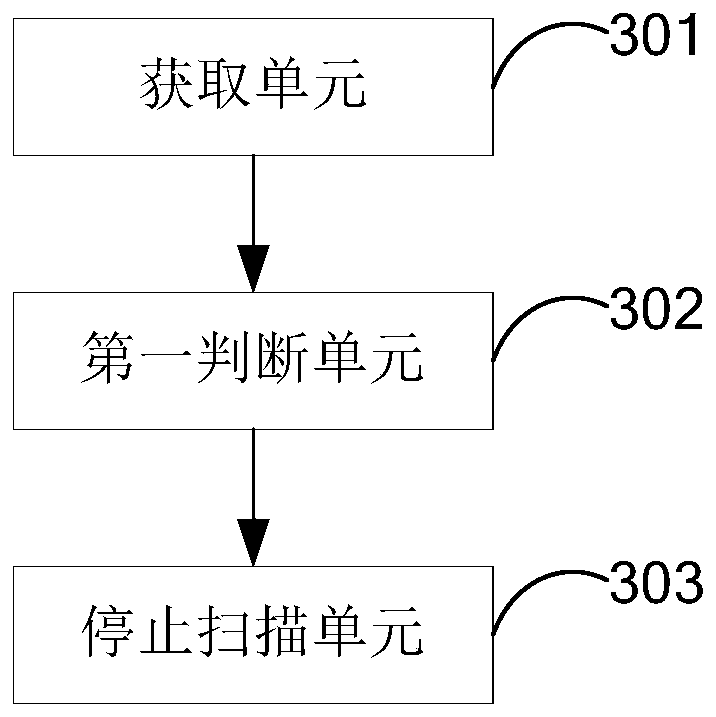Method, device and mobile terminal for scanning wireless access points
A wireless access point and mobile terminal technology, applied in the field of communication, can solve problems such as LTE and WLAN coexistence interference, and achieve the effect of avoiding coexistence interference
- Summary
- Abstract
- Description
- Claims
- Application Information
AI Technical Summary
Problems solved by technology
Method used
Image
Examples
Embodiment 1
[0023] Please refer to figure 1 , figure 1 It is a flow chart of the first preferred embodiment of the method for scanning wireless access points of the present invention. The method for scanning wireless access points includes the following steps:
[0024] Step S101: Obtain the communication frequency band currently occupied by the terminal;
[0025] Step S102: judging whether the communication frequency band is in an interference state; and
[0026] Step S103: If the communication frequency band is in an interference state, stop scanning surrounding wireless access points.
[0027] The following will combine figure 1 The method of scanning for wireless access points is introduced in detail.
[0028] In step S101, when the terminal starts the mode of actively scanning surrounding wireless access points, the terminal will send a detection request frame to wireless access points in the surrounding wireless local area network area on the 2.4GHz frequency band, wherein the d...
Embodiment 2
[0035] Please refer to figure 2 , figure 2 It is a flow chart of the second preferred embodiment of the method for scanning wireless access points of the present invention. The method for scanning wireless access points includes the following steps:
[0036] Step S201: judging whether the terminal currently occupies the communication frequency band for communication;
[0037] Step S202: If the terminal currently occupies a communication frequency band for communication, obtain the communication frequency band currently occupied by the terminal;
[0038] Step S203: judging whether the distance between the communication frequency band and the channel frequency band occupied by the terminal sending the detection request frame is smaller than a preset value;
[0039] Step S204: If yes, stop scanning the surrounding wireless access points; and
[0040] Step S205: If not, continue to scan the surrounding wireless access points.
[0041] The following will combine figure 2 T...
Embodiment 3
[0049] See image 3 , image 3 It is a schematic structural diagram of the first preferred embodiment of the device for scanning wireless access points of the present invention. The device for scanning wireless access points provided in this preferred embodiment includes an acquiring unit 301 , a first judging unit 302 and a scanning stop unit 303 . Wherein, the acquiring unit 301 is configured to acquire the communication frequency band currently occupied by the terminal. The first judging unit 302 is configured to judge whether the communication frequency band is in an interference state according to the communication frequency band. The stop scanning unit 303 is configured to stop scanning surrounding wireless access points when the first judging unit 302 judges that the communication frequency band is in an interference state.
[0050] The following will be combined with image 3 The device for scanning wireless access points will be described in detail.
[0051] When...
PUM
 Login to View More
Login to View More Abstract
Description
Claims
Application Information
 Login to View More
Login to View More - R&D Engineer
- R&D Manager
- IP Professional
- Industry Leading Data Capabilities
- Powerful AI technology
- Patent DNA Extraction
Browse by: Latest US Patents, China's latest patents, Technical Efficacy Thesaurus, Application Domain, Technology Topic, Popular Technical Reports.
© 2024 PatSnap. All rights reserved.Legal|Privacy policy|Modern Slavery Act Transparency Statement|Sitemap|About US| Contact US: help@patsnap.com










